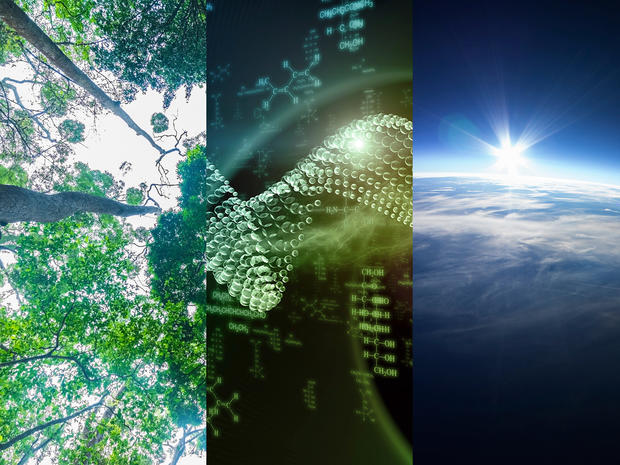World's largest atom smasher returns: 4 things it could find
The world's largest particle collider is gearing up for another run of smashing particles together at nearly the speed of light. After a two-year hiatus for upgrades, the Large Hadron Collider (LHC) will restart this year, and is expected to be twice as powerful as it was during its first run.
In 2012, the LHC helped to find evidence of the Higgs boson, the particle that is thought to explain how other particles get their mass. The discovery vindicated theoretical calculations made decades ago, and bolstered the Standard Model, the current framework of particle physics.
With the LHC slated to run at energies more powerful than any previous particle accelerator, what are physicists hoping to find now? [See photos of the Large Hadron Collider]
When the LHC fires up again this year, it will reach energies of 13 trillion electron volts, with enough current to melt 1 ton of copper. This run is expected to last until 2018.
At the 2015 meeting of the American Association for the Advancement of Science, held Feb. 12-16 in San Jose, California, several researchers involved in the experiments spoke about their expectations for the coming years. "We'll see the first cracks in the Standard Model," said Michael Williams, assistant professor of physics at MIT, who uses data from the LHC to study matter and antimatter.
In a particle accelerator, a stream of protons -- usually hydrogen or something heavy, like lead -- is accelerated by magnetic fields in a 17-mile-long (27 kilometers) loop. The particles are accelerated to a velocity just a hair less than the speed of light and are then smashed into one another.
These collisions produce a cascade of subatomic particles and radiation that provide clues about the building blocks of matter. Some of these particles are new and are not usually seen outside of such collisions because they transform (or "decay") into more familiar types after only a tiny fraction of a second. For example, particle accelerators showed that protons were made of quarks and produced the W and Z bosons, which carry the weak nuclear force involved in radioactive decay. This is why particle physicists reach for ever-higher energies -- the more energy in the collisions, the more heavy particles get produced, which means a greater chance that something interesting will show up.
Here are four things the LHC teams hope to find during the LHC's second run.
1. Supersymmetric partners
Supersymmetry is a theory (or set of theories) that says particles, which are divided into two classes called bosons and fermions, are related and that every particle has a "partner." This means all the force-carrying particles (bosons) have a fermion partner, and all the fermions have boson partners. The gluino, for example, is the supersymmetric partner of the gluon. Gluons carry the strong nuclear force that holds protons and neutrons together, so they are bosons. Gluinos would therefore be fermions.
However, supersymmetric partners have not been detected yet. This is an issue because some of the theoretical calculations show that at least a few should have appeared by now. That said, as the LHC runs its second set of experiments, physicists hope that they will see these supersymmetric partners, which would help narrow down which version of supersymmetry theory is correct, if any.
2. More than one Higgs?
The Higgs boson solved a major problem for the Standard Model, but it raised some important questions as well. Theories say there might be more than one kind, and the LHC's second run might help to answer how many Higgs bosons there are, and why the Higgs has the mass that it does. [Beyond Higgs: 5 Elusive Particles That May Lurk in the Universe]
3. Dark matter
Dark matter is the mysterious stuff that makes up some 25 percent of the mass and energy of the universe. Astronomers say there's about five times as much of it as normal matter, but dark matter only interacts with things via gravity. As such, a blob of dark matter in a box would be invisible. This makes it hard to figure out what it is.
The LHC, though, may generate enough energy to pop out a dark-matter particle from one of the collisions. Dark matter would have to be electrically neutral (no positive or negative charges) and not decay in a few seconds. "If we find something that looks like it could be dark matter at the LHC, we would try to measure as much as we can about it ... and hopefully get hints of how to detect it directly in other experiments," said Jay Hauser, a physicist at the University of California, Los Angeles.
4. Solving some problems of the Big Bang
Using heavier proton beams, such as gold or lead, the LHC will allow physicists to see what conditions were like just a few billionths of a billionth of a billionth of a second after the birth of the universe. Exploring how matter behaves under these conditions can offer insights into how the universe evolved to appear as it does -- why the first matter was mostly hydrogen and helium, and why it has the proportion of matter and antimatter that it does.
